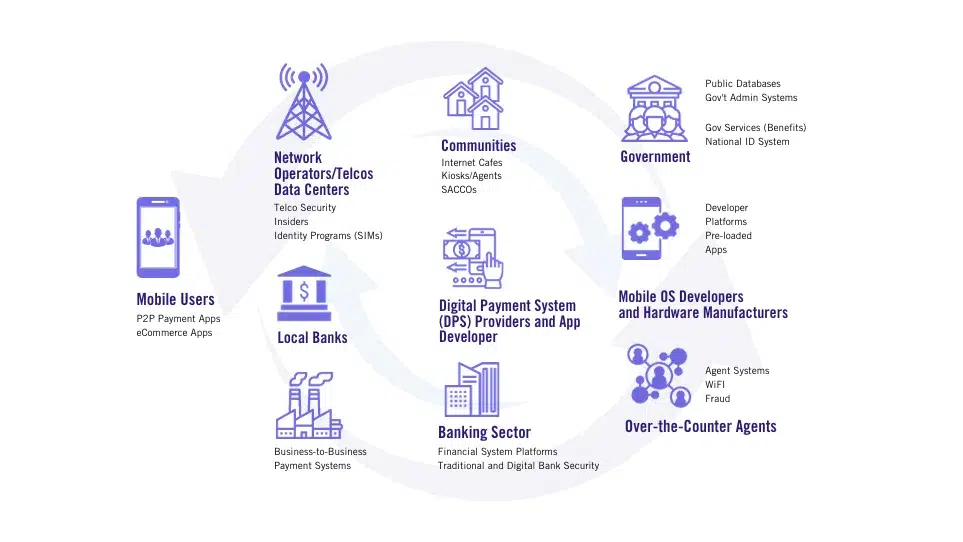
Securing the Digital Financial Ecosystem Abroad


Investing in semiconductor fabrication is a path to preserving the nation’s ability to innovate in an industry ripe for constant disruption.
For many Americans, the COVID-19 pandemic was their first experience with the tenuous positioning of the semiconductor supply chain, bringing to bear the catalytic impact it has on daily life, the U.S. economy, and national security. As the supply situation continues to improve, we must seize this moment and establish pathways to an urgent but enduring collaboration between government and industry to ensure that future crises are avoided.
Due to the inherent prevalence of semiconductor components in the daily life of the American citizen, the supply chain crisis will always remain a focal point of semiconductor industry innovation. The average American, during the height of the COVID-19 pandemic, saw the impact of the crisis in diminished inventory of household items and lifestyle products, drawing attention away from other insecurities within the industry. As investments are made across the ecosystem, it is critical that our industry looks beyond the chip shortage, making room to address the technological challenges that are often not at the forefront of national discussions around semiconductor innovation.
The unique technological underpinnings and R&D ecosystem of the semiconductor industry point to more challenges ahead. These critical, yet relatively silent, challenges provide key opportunities to establish a position of leadership within the industry, leading to stronger control of the U.S. economy, and national security.
Observed by Intel co-founder Gordon Moore, this “law” states that the amount of transistors on a microchip double about every two years, while the cost is halved. This exponential growth estimate has held true since the dawn of the semiconductor industry and shaped the evolution of microelectronics. However, the physical limits to Moore’s Law are within view.
A 2020 report published by the Royal Society anticipates Moore’s Law flattening by 2025. semiconductor (CMOS) devices, are left with limited scaling options. The search is on for new materials and architectures that avoid the constraints of current processes.
As Dr. Edlyn Levine, former Chief Technologist at MITRE Engenuity, explained during her appearance on MITRE Engenuity’s Circuit Talk podcast, “The technology is reaching an inflection point, whereby those scaling laws are starting to break down. We have to make that next jump, and there are other innovations that will continue to yield performance. Minus replacing CMOS transistors with a new base technology, there are also lots of innovations that you’re going to see in packaging technologies.”
The U.S. is the firmly established leader in semiconductor innovation, spending more on R&D than the rest of the world combined. But with only 12% of the world’s total semiconductor manufacturing capacity, and none of it presently capable of advanced fabrication, in the United States, with promising ideas dying on the vine or going offshore as they struggle to progress from design to implementation.
As increased capacity for prototyping, scaling, and the transfer to manufacturing of breakthrough technologies is key to evolving beyond Moore’s Law, the need to increase domestic fabrication capacity will continue even after the supply shortage abates. New infrastructure is necessary to make sure that companies can realize the fruits of their R&D investments, allowing the industry ecosystem to take more innovative design risks knowing that an idea or investment won’t get lost between research and production.
The Semiconductor Research Corporation identified five “Seismic Shifts” that will require breakthrough computing innovation.
The semiconductor industry must address these shifts to power breakthrough technologies like 5G and beyond, AI, cloud, edge computing, and autonomous vehicles, all while taking environmental impact into consideration.
Semiconductor chips are essential to an increasing array of products and services ranging from healthcare to automobiles, handheld consumer devices to smart factories. Embracing the expanding role of semiconductors, both from a production and implementation standpoint, will spur growth in the U.S. economy, providing new avenues for onshoring of jobs and businesses.
Advancing to the next generation of semiconductor technologies will require bold exploration, understanding the intrinsic linkages, and leveraging a “full-stack” approach that spans innovations not only in materials, devices, and process technologies but in architectures, software, and applications. As described by the MITRE Engenuity-led Semiconductor Alliance, these “Breakthrough Challenges” can hold the key to generations of impact and innovation.
The chip shortage provides a useful reminder of the growth opportunities within the U.S. semiconductor industry. In a space ripe for expansion and innovation, America currently lacks the capacity for prototyping, scaling, and manufacturing the breakthrough technologies needed to maintain global strategic leadership. With the potential for economic and national security risks due to limited capacity and access, it is essential for the U.S. to continue addressing this shortcoming in the semiconductor ecosystem.
We’ve already felt the economic aftershocks of supply disruptions, but as the world becomes increasingly connected, the risks of cyber threats to people, businesses, and governments will continue to escalate. An increased reliance on smart devices and a more interconnected populace puts the onus on the U.S. semiconductor industry to support the needs of businesses, government, and the intelligence community.
As painful as the current chip shortage has been for U.S. consumers and hard-hit industries, future shortages can be avoided by learning from the current one and anticipating industry evolutions. It also presents an opportunity: advancing chip technology at home will lead to possibilities that can’t yet be imagined. By seizing this moment as a national challenge, we can leverage the brilliant minds being educated and working within America to create a supercharged industry.
The country is already well positioned thanks to its leadership in R&D, legal protections for intellectual property, and heritage of disruption, but it is imperative that we attack these challenges with intention by expanding innovation and growth as we continue to strengthen the semiconductor industry in America.